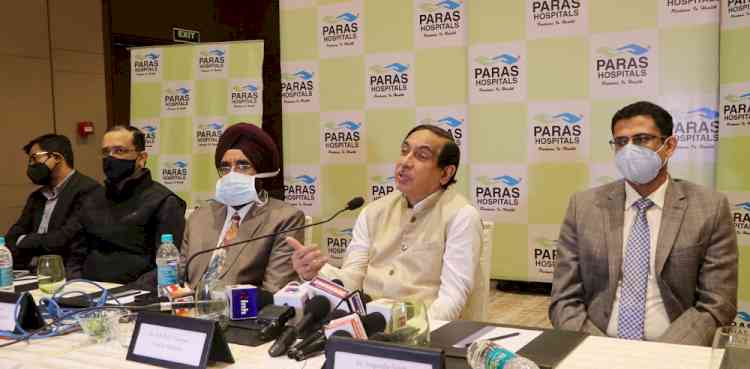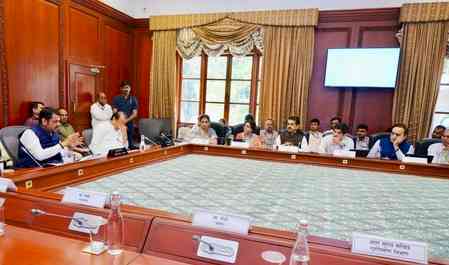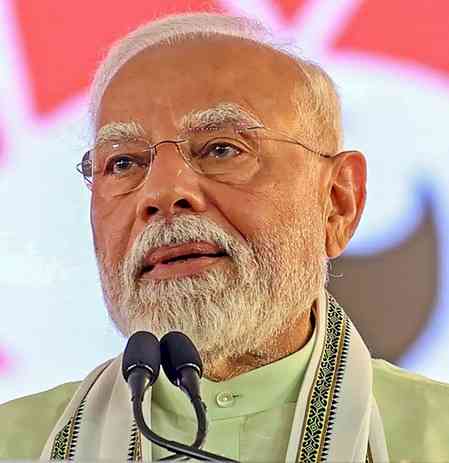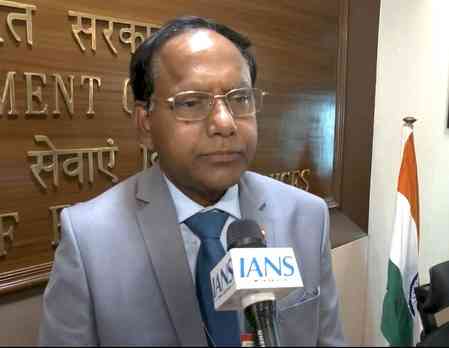Comprehensive Heart Valve Clinic now at Paras Hospital Panchkula
Aortic Valve Replacement with Non-Surgical Procedure called TAVI - A Boon for Elderly and high surgical risk Patients: Dr. Bali

Chandigarh: With a view to create awareness on “Heart Valve Problem & Non-Surgical Treatment of Heart Valves”, a team of Doctors from PARAS Superspeciality Hospital Panchkula, addressed mediapersons today. During the media interaction, from Paras Super Specialty Hospital, Panchkula, its Chairman Cardiac Sciences Dr. H.K.Bali, Director CTVS Dr. Rana Sandeep Singh, Associate Director Cardiology Dr. Anurag Sharma, Senior Consultant Cardiology Dr. Kapil Chattree, Consultant Cardiology Dr. Gagandeep Singh and Consultant Cardiac Anesthesia Dr. Priyanka Gupta were present.
Addressing the mediapersons, Chairman Cardiac Sciences Dr. H.K.Bali said that Valve replacement surgery is conducted to replace the damaged or diseased cardiac valve. Dr. Bali said that during a typical heart valve replacement, the damaged or diseased valve is replaced with a biological or synthetic valve, choice of which depends on the condition of the patient. He further said, “There are four types of cardiac valves – aortic, mitral, tricuspid, and pulmonic. Any of these valves may get diseased or damaged during a person’s lifetime”, while adding, “However, heart valve replacement is most commonly performed on diseased or damaged aortic valve.”
Dr. Bali said that the main indication for conducting Aortic Valve replacement is Aortic Stenosis, which is a condition in which the aortic valve, that supplies blood to the whole body, gets severely thickened and narrowed. “This condition is more often seen in Elderly population. Although the main reason of Aortic stenosis is age related degeneration, other reasons can be congenital malformation in valves and infections treatment for this severely narrowed Aortic valve for many decades was only Aortic Valve replacement by Open Heart Surgery. This was the only option available till five years back, as such elderly and high risk patients not suitable for surgery had the option of medicinal management only”, he elaborated.
Throwing further light on the issue, Dr. Bali said that when the stenosis reaches the stage of critical narrowing, the heart is unable to pump sufficient blood to the whole body, resulting in breathlessness, fatigue, chest pain, swelling in legs and transient loss of consciousness. “Severe Aortic stenosis is a progressive life threatening condition and in the absence of valve replacement, the survival after onset of symptoms is 50 per cent at 2 years and 20 per cent at 5 years. There is also a 1.5-2 per cent per year risk of sudden death. So, intervention for severe aortic stenosis should be performed promptly, once even minor symptoms occur”, he stressed.
Dr. Bali opined that the Open Heart Surgery for valve replacement is not suitable in many elderly patients especially patients, who are in the age group of 80 years and above and who have other comorbid conditions like low ejection fraction (Low pumping of Heart). “Now, there is an option of the latest non-surgical technique of Aortic Valve replacement – TAVI (Trans catheter Aortic Valve Implantation or TAVR (Trans catheter Aortic Valve Replacement). It is a totally non-surgical treatment, where there is no need to open the chest of the patient surgically, there is No blood loss, negligible chances of infection, the procedure can be performed in 1.5-2 hours and the patient can be discharged in 2-3 days”, he informed. Dr. Bali shared that as of today in India, around 600 TAVI cases are performed annually, whereas in the USA approx 80000 thousand TAVI cases are done annually.
In his address, Dr. Anurag Sharma said, “Till few years back, TAVI was recommended only in high risk and inoperable patients. In 2016, it has been approved in intermediate risk patients as well. Recent trials have shown TAVI to be feasible for the low surgical risk group also. TAVI procedure is conducted through one of the arteries in the groin, similar to how Angiography was performed earlier. The Valve is implanted by Endovascular technique. After the procedure, the groin artery is closed with internal suture devices and patient can be discharged within 2-3 days. With advancement in Medical technology and introduction of Lesser Invasive technique, TAVI for Aortic valve replacement, there is a ray of hope for old, high risk, inoperable patients and a suitable Non-Surgical alternative in other patients, who are going for surgical valve replacement.”


 cityairnews
cityairnews 








